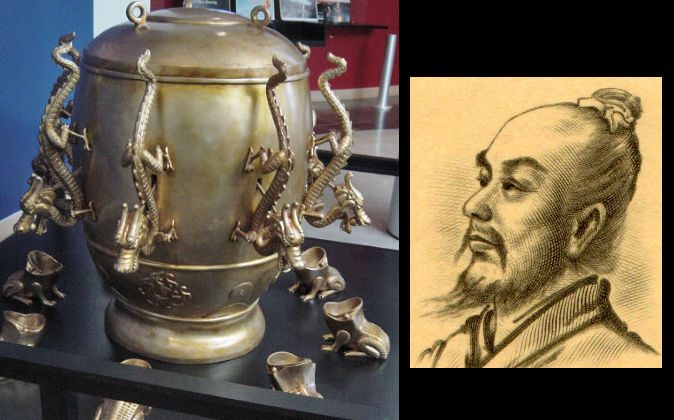* There are networks of thousands and thousands of seismographs installed all over the world that can pinpoint the epicenter of an earthquake, however, the first earthquake detection device was created almost 2000 years ago, before people understood the causes of earthquakes. They caused an earthquake.
Zhang Heng was one of the most brilliant inventors in ancient China. Among his works, a pilgrim seismograph in the shape of a vessel stands out.
Surprisingly, it was the first earthquake detection device created 2,000 years ago, long before people understood what an earthquake was.

The earthquake detection device was a large bronze container with a diameter of 2.67 meters. On the outside it had 8 dragons attached with metal spheres in their mouths, each pointing to one of the eight main cardinal points.
Beneath each dragon was a bronze toad with an open mouth. When an earthquake occurred, the internal mechanism activated and the dragon opened its mouth in the direction the earthquake came from. Thus the metal sphere would fall into the mouth of the corresponding toad.
As can be seen, the seismograph was a magnificent piece of art as well as a complex device.
Currently there is no archaeological piece of the seismograph. The chronicles of the time do not describe in great detail the interior of the device, so we do not know for sure how it worked. Academics suggest that a pendulum that worked by inertia was placed in the center, and this would indicate the direction of the earthquake. .
The only historical record that mentions anything about the internal layout is in 张衡 Zhāng Héng’s biography in the book 后汉书 Hòu hàn shū, History of the Late Hàn Dynasty. according to this text
device reconstruction
The first European seismographs date back to 1703 CE and all designs are based on using pendulums. For this reason many scientists who tried to reconstruct the seismograph thought that the dragon seismograph could be some kind of pendulum that activated the mechanism of a dragon’s mouth when the earthquake arrived. But later studies discarded this system because it is not as precise as the chronicles narrate. Today most scientists hold that the internal mechanism must follow the same principle as a modern seismograph, inertia .
conclusion
Although the original remains of the seismograph are not preserved, and we do not know exactly how it worked, the inventiveness of 2,000 years ago never ceases to amaze us.
Reconstructions have shown that the artifact was possible with the technology of the time and its accuracy is similar to that reported in historical archives.
The Dragons seismograph is now on display in most science museums in China and is mentioned in geology books, reminding us that great things can be achieved with a little ingenuity, study, and willingness to help others. .





